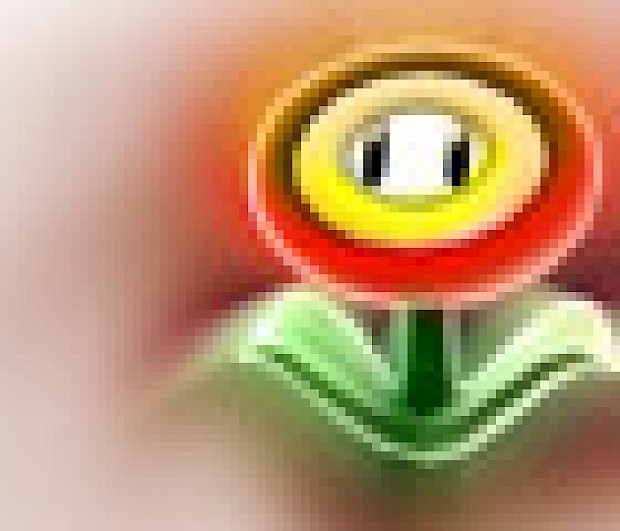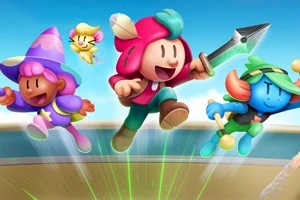Column: Fire Flower #58

Posted 14 Aug 2009 at 05:27 by Ashley Jones

| "Street Fighter II did not re-invigorate the fighting game genre – it WAS the fighting game." |
Which do you think could be harder? Zangief’s Double Lariat to the face, or DK landing the perfect smash on your sorry 200% damaged ass? Or even harder, deciding which out of SFII and SSBM is the better fighting game.
Ah, the memories. When I were a lad, there were a little place down in the centre of town that let you “games test” for �1 per half hour. They had a bank of about 15 SNES’s set up along with 5 Megadrives and a Game Gear. Why more SNES consoles? Simple: Street Fighter II Turbo had just come out and was taking the home console market by storm.
No longer were we restricted to beery, smoke-smelling arcades run by two-bit crooks and their onion-chewing heavies. Now children and fighting junkies the world over could get their fix of Sonic Booms in the safety of their own living room. What a glorious prospect!
Street Fighter II did not re-invigorate the fighting game genre – it WAS the fighting game. Characters like Ryu, Ken, M. Bison et al have become the apocryphal fathers of the Beat ‘em Up. What came before? Was there even a Street Fighter I? I’m pretty sure no-one can remember, and even if they can, what’s the point in going back to a time without SFII?
Projectiles, uppercuts, sweep manoeuvres and high-kicks had all been done before to some degree or other. But never before had they been done with such style and skill. Combos made their very first appearance with

Hadouken!
And that right there is the crux of Street Fighter II: Skill. Every arcade and every circle of friends has its share of mindless button-bashers, those people who win because they hammer the controls palm-first and pay almost no attention to their character on screen. Button mashers were in for a shock with SFII: you had to have fantastic reflexes, an encyclopaedic knowledge of the characters’ special moves and how to counter them as well as the ability to wail on those buttons faster than your opponent.
Graphically, SFII was just phenomenal. It really led the way for the new generation of fighting games with its character animations – their faces showed visible pain as they reacted to each successful blow their opponent landed, conveying real emotion and lending a depth of immersion in the game hitherto unseen. The backgrounds were stunning and often drew they eye more than the characters themselves. Who could forget Chun Li’s realistic depiction of China with animals in the background and swinging lanterns to catch the eye?
SFII undoubtedly invented the fighting genre as we know it today, and set the bar for what was expected of every fighting game from then on. Even Capcom themselves have never really bettered the original SFII, though they have tried with numerous ridiculous sequels and spin-offs.
If Street Fighter II revolutionised the genre, the Super Smash Brothers Melee created a new sub-genre within the Beat ‘em Up frame. Hot on the heels of the critically lauded Super Smash Bros on the N64, Melee was just about the most unusual fighting game to have ever been released. Instead of knocking the enemy around ‘til he was dead, the game introduced the idea of knocking the enemy around enough until you could knock him off the screen.
Perhaps this was another attempt by Nintendo to remain family friendly, and ditch any allusions to blood and real pain, but somehow this quirky mechanic really worked for gamers. Traditional fights could still play a part in multiplayer if necessary and there were many new ways to play, but ultimately the fun was seeing how long you could hang on in desperation on the massive stages while taking damage. The game became about your own survival as much as the demise of your opponents: as even a character with 60% damage could be sent flying for that all-important +1.

Falcon Miss!
Much like in SFII, button bashing played its part, but again, without correct use of dodges, recovery moves and counters you could pretty much expect to be beaten every single time by players more experienced than you. Fighting became a secondary player to the more important role of strategy. Stand at the edge of the screen waiting to smash Link into oblivion risks your own hide if your opponent is quick enough to use the superb physics engine to his advantage.
Then there’s the roster of characters. While it can’t be contended that too many people wondered who would win in a fight between Mario and Peach, there were many gamers looking forward to smacking the living daylights out of that little whatsit Pikachu. The character list was huge with many Nintendo favourites making an appearance in some form or another.
Something has to be said for the longevity of the game: it was magnificent in scope. Characters could compete not only in multiplayer battles with 4 players, but also had long single player adventures to complete, as well as literally hundreds of trophies, rewards and extras to enjoy. Even when the game was over it wasn’t really over: as the credits began to roll players were treated to an on-rails space shooting experience to rack up coins for use in the trophy machine.
Yes, Smash Bros Melee was by far the most “video game” of all games ever made. But was it the best fighter?
Well… no. SFII is and always remains the king of fighting games. It was the template from which all others came and it’s still just as playable today as it was nearly 20 years ago. Melee gives it a damn fine run for its money, and it deserves an honourable mention, but we doubt that Melee will ever enjoy the legacy that SFII does even now. Hats off to Mario and Co. for an admirable effort, but this round belongs to Ryu, Ken and the delicious Chun Li. SFII literally Spinning Bird Kick’s every other fighting game ever into submission, and that’s almost tragic, because we’ll never know its like again.






















